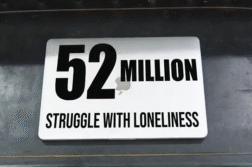HOUSTON, Texas (IVANHOE NEWSWIRE) — Institutional racism, diversity and inclusion, safe spaces, critical race theory; these are all terms that have been thrown into the spotlight since May 2020 after a 9 minute and 29 second video showed a police officer kneeling on the neck of George Floyd. He died and polarizing conversations grew surrounding race. Now an organization that has been having that conversation for more than three decades sheds a light on how we can have conversations about race more effectively. healing racism
“It’s one of those conversations that even though you recognize it you don’t want to have that conversation, so you find ways to not to,” explains Cherry Steinwender, Executive Director & Co-Founder of the Center for the Healing of Racism.
Cherry Steinwinder has been having conversations about race for more than 30 years. It all started when Steinwender and a group of multi-ethnic friends would meet and have open conversations about racism around the kitchen table.
“To be totally transparent was creating something within us, maybe we could call it healing,” Steinwender says.
That’s when the Center for the Healing of Racism was born. The center holds workshops for groups of all races to have an educational dialogue where they confront stereotypes, discuss issues of racism and its repercussions and racial conditioning. Steinwender believes talking is how understanding racism begins.
Steinwender explains, “When we don’t talk about anything, we don’t know anything. Getting sick with the disease of racism wasn’t your fault, but getting well is your responsibility.”
Those who take part in the workshop learn techniques on how to talk about racism.
“Would you be interested in sitting down with me and talking about our racial conditioning? That’s a very different question and a very different opening to ‘I don’t like what you just said.’”
Starting that conversation can be revealing.
“We may look different in hues and have some different features, but we have at least 98-point DNA in common.” Steinwender says.
Steinwender believes parents should start talking to their kids early about race. The center holds workshops for kids as young as pre-kindergarten and Steinwender uses bread to teach kids about different cultures. She says even though bread comes from different regions and in diverse shapes, sizes and color, it is still bread, just like people. For her work, she has been the recipient of the Gandhi, King, Ikeda and Diversity Champion Award.
Contributor(s) to this news report include: Milvionne Chery, Producer; Bruce Maniscalco Videographer and Roque Correa Editor.
To receive a free weekly email on Smart Living from Ivanhoe, sign up at: http://www.ivanhoe.com/ftk



